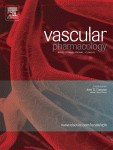Kopkan L, Husková Z, Vaňourková Z, Thumová M, Škaroupková P, Malý J, Kramer HJ, Dvořák P, Červenka L. Vascul Pharmacol. 2009 Aug–Sep;51(2–3):175–81. Epub 2009 Jun 16. IF: 2.319

Abstract:
Results of our previous studies have suggested that enhanced generation of superoxide (O2(–)) may contribute to the pathophysiology of hypertension in Ren-2 transgenic rats (TGR). The present study was performed to evaluace in TGR the effects of chronic treatment with the O2(–) scavenger tempol and the antioxidant apocynin on the development of hypertension. Systolic blood pressure (SBP) was monitored from 30 to 99 days of age in TGR and in normotensive Hannover Sprague-Dawley (HanSD) rats. At the end of the experiment, urinary protein and 8-isoprostane excretion were determined and angiotensin II (ANG II) and malondialdehyde (MDA) levels were measured in kidney and cardiac tissues. Cardiac hypertrophy was assessed as the ratio of left heart ventricle weight to tibia length (LVW/TL). Although tempol and apocynin treatment in TGR significantly decreased 8-isoprostane excretion and MAD tissue concentrations as compared with untreated TGR, it did not alter the course of SBP, LVW/TL ratio, proteinuria or ANG II levels that were enhanced as compared with HanSD rats. Our data suggest that the development of hypertension in TGR is clearly ANG II-dependent but the contribution of oxidative stress to the development of hypertension in this model appears to be negligible.
-mk-